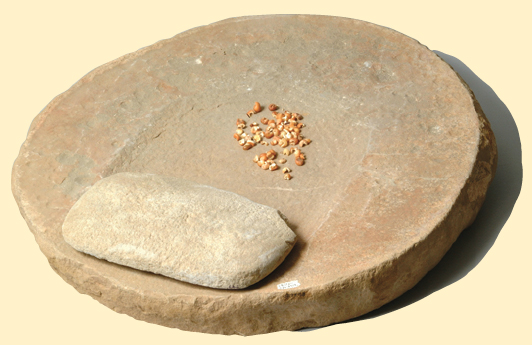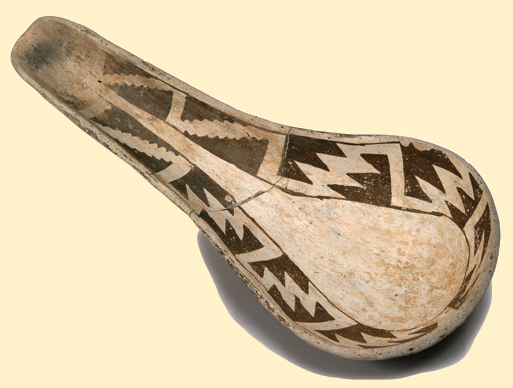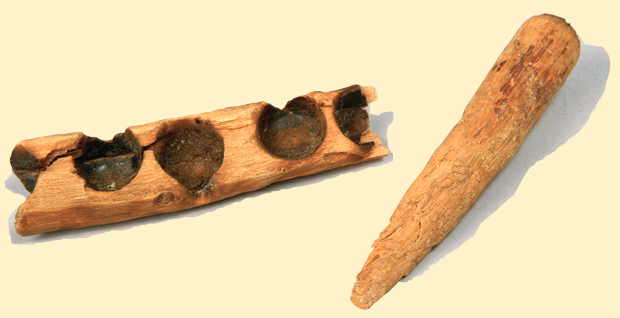Daily Life in Chaco Canyon

About AD 1000, Pueblo Bonito stood at the center of Chacoan culture in the arid region at the intersection of present-day Utah, Colorado, Arizona, and New Mexico. The largest site in Chaco Canyon, Pueblo Bonito originally stood four or five stories tall and housed more than 600 rooms, including 35 kivas, the circular structures visible around the perimeter of the large plazas. Chaco residents covered each kiva with a roof, creating a darkened underground space for ceremonial rituals. Why might these spaces be built below ground and separated from the other rooms of the pueblo?

The exact nature of Chacoan ceremonies remains a mystery, but less mysterious are the routines of daily life that sustained the people at Pueblo Bonito for centuries. Imagine a woman setting out from the pueblo on a spring day to plant corn, the most important food crop. She might first strap on sandals, like the one shown here, woven from fibers of the yucca plant. To dig a hole for planting corn seeds, our imagined woman might use a digging stick like the one shown here, tipped by the horn of a mountain sheep, tightly bound with sinew to a sturdy cottonwood branch, and covered with animal hide to protect the binding. What do the sandal and digging stick suggest about the interdependence of hunting and agriculture in the daily lives of Chacoans?

Once harvested and dried, corn needed to be ground in order to be cooked and eaten. By looking at the small flat stone (the mano) and the larger stone slab (the metate) shown here, can you imagine how our Chacoan woman used these tools? Some rooms at Pueblo Bonito held numerous grinding stones like the ones shown here. What does such grouping suggest about the corn-grinding process?

To cook the cornmeal she had ground, our imagined woman needed to mix it with water. She might use a ceramic ladle like the one shown here — crafted and decorated by a pottery maker at Chaco — to dip some fresh water from a storage pot. To make a fire, she could use the Chacoan fire starter kit shown here. After kindling a cooking fire, she could heat the cornmeal gruel in a ceramic pot and use the ladle again to transfer servings into small bowls for eating.

Chacoans flourished at Pueblo Bonito by using their knowledge and skills to grow and cook corn and to craft vital items such as ceramics and footwear. Can you imagine each step in the creation of the artifacts shown here? Can you imagine the organization and scheduling of daily tasks required to make and use these basic items?

SOURCES: Pueblo Bonito, Chaco Canyon, New Mexico: Richard Alexander Cooke III; Sandal: Chaco Culture National Historic Park, Photo Archives, Image #CHCU 33288; Digging Stick: Chaco Culture National Historic Park, Photo Archives, Image #CHCU 4097; Mano and Metate: Chaco Culture National Historic Park, Photo Archives, Image #CHCU 29588, CHCU 7041; Firestarter Kit: Chaco Culture National Historic Park, Photo Archives, Image #CHCU 33447, CHCU 33457; Ladle: Chaco Culture National Historic Park Photo Archives, Image #CHCU 29079.
CONNECT TO THE BIG IDEA

Question 1.7
How does the lifestyle of Chaco Canyon society compare to indigenous societies in other regions?